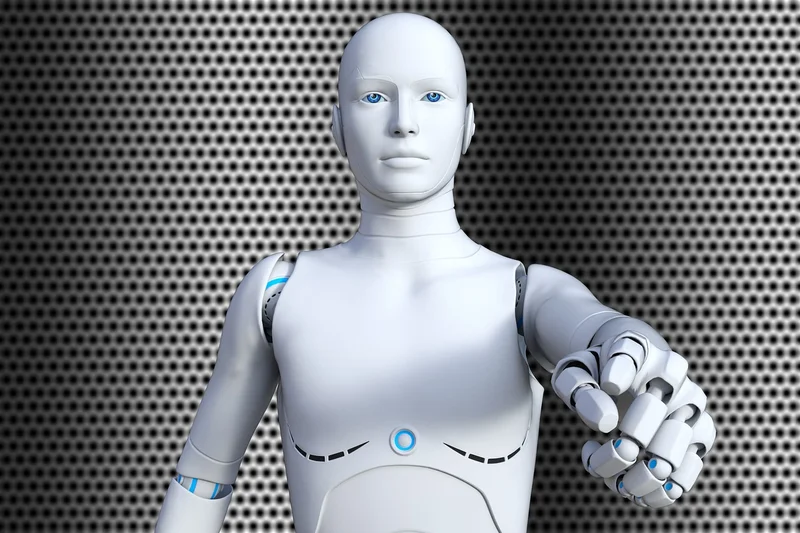BNB Signals | Binance Coin Trading Alerts & Insights
BNB Signals | Binance Coin Trading Alerts & Insights
Elon Musk needs to deliver a million AI bots within the next decade to unlock his Tesla pay package. That's the headline. But what's the real story behind the sudden surge of humanoid robots? We're seeing them everywhere: Tesla showrooms, Foxconn factories, even serving burgers in Hollywood. It's a far cry from the hydraulic acrobatics of Boston Dynamics' Atlas, which, let's face it, felt more like a proof-of-concept than a practical solution.
The question is, are these robots genuinely poised to revolutionize industries, or are we witnessing another tech-fueled hype cycle, destined to underdeliver?
Musk, of course, is the loudest proponent. He envisions Tesla robots as "potentially more significant than the vehicle business," possibly "the biggest product of all time." That's a bold claim, especially considering Tesla's current market capitalization hinges almost entirely on its car sales. He even went so far as to suggest that Tesla AI "might play a role in AGI." It's a compelling vision, but it's also one built on a foundation of unproven assumptions. Why human-shaped robots loom large in Musk's Tesla plans - BBC
Morgan Stanley predicts Apple could earn $133 billion a year from humanoid robots by 2040. That's a massive number, but it's also 16 years out. A lot can change in the tech landscape in that time (remember Google Glass?). The report doesn't specify how Apple would generate that revenue – manufacturing, software licensing, data collection? – which makes the projection feel more like aspirational thinking than grounded analysis.
Forrester analyst Brian Hopkins believes humanoid robots could disrupt physical-service industries by 2030. Again, the timeframe is significant. 2030 is only six years away, but the specifics of that disruption remain vague. Will it be a widespread displacement of human workers, or a more nuanced integration of robots into specific tasks? The devil, as always, is in the details, and those details are conspicuously absent. The report is very optimistic, but how was the forecast derived? What are the error bars on the prediction?

Tech firm 1X is aiming to launch its Neo robot in 2026 for a cool $20,000, designed for menial chores. However, the Wall Street Journal reported that the Neo is currently controlled by a person wearing a VR headset. That's… less impressive. It's essentially tele-operated robotics with a humanoid shell. The $20,000 price point seems ambitious, especially considering the current state of the technology. How much of that cost is materials, how much is R&D, and what's the margin?
Many roboticists are skeptical of the humanoid form factor. They question the necessity of legs and heads, suggesting that specialized robots designed for specific tasks might be more efficient and cost-effective. And they have a point. Four-wheeled robots have been automating warehouse logistics for years. Why add the complexity and expense of bipedal locomotion unless it offers a tangible advantage?
The viral videos of Boston Dynamics' Atlas performing gymnastics are undeniably impressive, but they also highlight the limitations of current humanoid technology. Those routines are carefully choreographed and require a controlled environment. Real-world environments are messy, unpredictable, and full of obstacles. Can these robots truly navigate complex spaces and perform intricate tasks reliably and safely?
Sam Altman, the OpenAI boss, stated in May that the world isn't ready for humanoids. That's a surprising admission, given the hype surrounding AI and robotics. But Altman is a pragmatist. He understands that the technology is still in its early stages and that significant challenges remain. (Altman's statement is also notable because he has a vested interest in pushing the boundaries of AI.)
And this is the part of the analysis that I find genuinely puzzling: we're seeing a rush to humanoid robots without a clear articulation of why they're superior to existing robotic solutions. Is it simply a matter of aesthetics? Do we, as humans, prefer interacting with machines that resemble ourselves? Or is there a deeper, more practical reason for this trend?
The data suggests that the humanoid robot revolution is more aspiration than reality. While the technology is advancing rapidly, significant challenges remain in terms of cost, reliability, and practicality. The current hype cycle seems driven more by investor enthusiasm and science-fiction fantasies than by concrete evidence of real-world utility. It's a classic case of correlation not equaling causation.